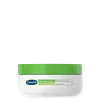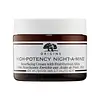What's inside
What's inside
 Key Ingredients
Key Ingredients

 Benefits
Benefits

 Concerns
Concerns

 Ingredients Side-by-side
Ingredients Side-by-side

Water
Skin ConditioningHydrogenated Poly(C6-14 Olefin)
EmollientCaprylic/Capric Triglyceride
MaskingDimethicone
EmollientGlycerin
HumectantButylene Glycol
HumectantCetearyl Olivate
Sorbitan Olivate
EmulsifyingCyclopentasiloxane
Emollient1,2-Hexanediol
Skin ConditioningAscorbyl Palmitate
AntioxidantCaprylyl Glycol
EmollientCetearyl Alcohol
EmollientCetearyl Methicone
Skin ConditioningCitric Acid
BufferingGlyceryl Stearate
EmollientHydrolyzed Hyaluronic Acid
HumectantIsohexadecane
EmollientIsopropyl Lauroyl Sarcosinate
Skin ConditioningLeuconostoc/Radish Root Ferment Filtrate
AntimicrobialLinoleic Acid
CleansingLycopene
AntioxidantMarrubium Vulgare Extract
Skin ConditioningOlea Europaea Fruit Oil
MaskingPEG-100 Stearate
PEG-40 Stearate
EmulsifyingPhenoxyethanol
PreservativePhospholipids
Skin ConditioningPolymethylsilsesquioxane
Retinyl Palmitate
Skin ConditioningSodium Benzoate
MaskingSodium Polyacrylate
AbsorbentSteareth-2
EmulsifyingSteareth-21
CleansingTocopheryl Acetate
AntioxidantWater, Hydrogenated Poly(C6-14 Olefin), Caprylic/Capric Triglyceride, Dimethicone, Glycerin, Butylene Glycol, Cetearyl Olivate, Sorbitan Olivate, Cyclopentasiloxane, 1,2-Hexanediol, Ascorbyl Palmitate, Caprylyl Glycol, Cetearyl Alcohol, Cetearyl Methicone, Citric Acid, Glyceryl Stearate, Hydrolyzed Hyaluronic Acid, Isohexadecane, Isopropyl Lauroyl Sarcosinate, Leuconostoc/Radish Root Ferment Filtrate, Linoleic Acid, Lycopene, Marrubium Vulgare Extract, Olea Europaea Fruit Oil, PEG-100 Stearate, PEG-40 Stearate, Phenoxyethanol, Phospholipids, Polymethylsilsesquioxane, Retinyl Palmitate, Sodium Benzoate, Sodium Polyacrylate, Steareth-2, Steareth-21, Tocopheryl Acetate
Water
Skin ConditioningMethyl Trimethicone
Skin ConditioningSqualane
EmollientCaprylic/Capric Triglyceride
MaskingPolysorbate 40
EmulsifyingCetyl Alcohol
EmollientButylene Glycol
HumectantDimethicone
EmollientMyristyl Alcohol
EmollientPEG-100 Stearate
Jojoba Esters
EmollientGlycerin
HumectantCitrus Aurantium Amara Peel Oil
Skin ConditioningCitrus Aurantium Dulcis Peel Oil
MaskingCitrus Aurantium Amara Flower Oil
MaskingCinnamomum Zeylanicum Leaf Oil
MaskingValeriana Officinalis Root Oil
MaskingFerula Galbaniflua Resin Oil
AntimicrobialCitrus Aurantium Dulcis Fruit Extract
MaskingVanilla Planifolia Fruit Extract
Skin ConditioningLimonene
PerfumingLinalool
PerfumingCitral
PerfumingCitronellol
PerfumingCoffea Arabica Seed Extract
MaskingCitric Acid
BufferingTartaric Acid
BufferingLactic Acid
BufferingSalicylic Acid
MaskingBiotin
AntiseborrhoeicCastanea Sativa Seed Extract
Skin ConditioningTocopheryl Acetate
AntioxidantMagnesium Ascorbyl Phosphate
AntioxidantCI 77220
Cosmetic ColorantAloe Barbadensis Leaf Juice
Skin ConditioningSucrose
HumectantElaeis Guineensis Oil
EmollientHordeum Vulgare Extract
EmollientTriticum Vulgare Germ Extract
Skin ConditioningGlyceryl Stearate
EmollientSimmondsia Chinensis Butter
Skin ConditioningHypnea Musciformis Extract
Skin ProtectingLinoleic Acid
CleansingGelidiella Acerosa Extract
Skin ProtectingSqualene
EmollientPhospholipids
Skin ConditioningPhytosterols
Skin ConditioningTocotrienols
Skin ConditioningEthylhexylglycerin
Skin ConditioningCarbomer
Emulsion StabilisingTrehalose
HumectantSodium PCA
HumectantArginine
MaskingCaprylyl Glycol
EmollientCetearyl Alcohol
EmollientSodium Hyaluronate
HumectantTocopherol
AntioxidantCeteareth-20
CleansingHexylene Glycol
EmulsifyingTromethamine
BufferingSodium Dehydroacetate
PreservativePhenoxyethanol
PreservativeWater, Methyl Trimethicone, Squalane, Caprylic/Capric Triglyceride, Polysorbate 40, Cetyl Alcohol, Butylene Glycol, Dimethicone, Myristyl Alcohol, PEG-100 Stearate, Jojoba Esters, Glycerin, Citrus Aurantium Amara Peel Oil, Citrus Aurantium Dulcis Peel Oil, Citrus Aurantium Amara Flower Oil, Cinnamomum Zeylanicum Leaf Oil, Valeriana Officinalis Root Oil, Ferula Galbaniflua Resin Oil, Citrus Aurantium Dulcis Fruit Extract, Vanilla Planifolia Fruit Extract, Limonene, Linalool, Citral, Citronellol, Coffea Arabica Seed Extract, Citric Acid, Tartaric Acid, Lactic Acid, Salicylic Acid, Biotin, Castanea Sativa Seed Extract, Tocopheryl Acetate, Magnesium Ascorbyl Phosphate, CI 77220, Aloe Barbadensis Leaf Juice, Sucrose, Elaeis Guineensis Oil, Hordeum Vulgare Extract, Triticum Vulgare Germ Extract, Glyceryl Stearate, Simmondsia Chinensis Butter, Hypnea Musciformis Extract, Linoleic Acid, Gelidiella Acerosa Extract, Squalene, Phospholipids, Phytosterols, Tocotrienols, Ethylhexylglycerin, Carbomer, Trehalose, Sodium PCA, Arginine, Caprylyl Glycol, Cetearyl Alcohol, Sodium Hyaluronate, Tocopherol, Ceteareth-20, Hexylene Glycol, Tromethamine, Sodium Dehydroacetate, Phenoxyethanol
 Reviews
Reviews

Ingredients Explained
These ingredients are found in both products.
Ingredients higher up in an ingredient list are typically present in a larger amount.
Butylene Glycol (or BG) is used within cosmetic products for a few different reasons:
Overall, Butylene Glycol is a safe and well-rounded ingredient that works well with other ingredients.
Though this ingredient works well with most skin types, some people with sensitive skin may experience a reaction such as allergic rashes, closed comedones, or itchiness.
Learn more about Butylene GlycolThis ingredient is an emollient, solvent, and texture enhancer. It is considered a skin-softener by helping the skin prevent moisture loss.
It helps thicken a product's formula and makes it easier to spread by dissolving clumping compounds.
Caprylic Triglyceride is made by combining glycerin with coconut oil, forming a clear liquid.
While there is an assumption Caprylic Triglyceride can clog pores due to it being derived from coconut oil, there is no research supporting this.
Learn more about Caprylic/Capric TriglycerideCaprylyl Glycol is a humectant and emollient, meaning it attracts and preserves moisture.
It is a common ingredient in many products, especially those designed to hydrate skin. The primary benefits are retaining moisture, skin softening, and promoting a healthy skin barrier.
Though Caprylyl Glycol is an alcohol derived from fatty acids, it is not the kind that can dry out skin.
This ingredient is also used as a preservative to extend the life of products. It has slight antimicrobial properties.
Learn more about Caprylyl GlycolCetearyl alcohol is a mixture of two fatty alcohols: cetyl alcohol and stearyl alcohol. It is mainly used as an emulsifier. Emulsifiers help prevent the separation of oils and products. Due to its composition, it can also be used to thicken a product or help create foam.
Cetearyl alcohol is an emollient. Emollients help soothe and hydrate the skin by trapping moisture.
Studies show Cetearyl alcohol is non-toxic and non-irritating. The FDA allows products labeled "alcohol-free" to have fatty alcohols.
This ingredient is usually derived from plant oils such as palm, vegetable, or coconut oils. There is debate on whether this ingredient will cause acne.
Due to the fatty acid base, this ingredient may not be Malassezia folliculitis safe.
Learn more about Cetearyl AlcoholCitric Acid is an alpha hydroxy acid (AHA) naturally found in citrus fruits like oranges, lemons, and limes.
Like other AHAs, citric acid can exfoliate skin by breaking down the bonds that hold dead skin cells together. This helps reveal smoother and brighter skin underneath.
However, this exfoliating effect only happens at high concentrations (20%) which can be hard to find in cosmetic products.
Due to this, citric acid is usually included in small amounts as a pH adjuster. This helps keep products slightly more acidic and compatible with skin's natural pH.
In skincare formulas, citric acid can:
While it can provide some skin benefits, research shows lactic acid and glycolic acid are generally more effective and less irritating exfoliants.
Most citric acid used in skincare today is made by fermenting sugars (usually from molasses). This synthetic version is identical to the natural citrus form but easier to stabilize and use in formulations.
Read more about some other popular AHA's here:
Learn more about Citric AcidDimethicone is a type of synthetic silicone created from natural materials such as quartz.
What it does:
Dimethicone comes in different viscosities:
Depending on the viscosity, dimethicone has different properties.
Ingredients lists don't always show which type is used, so we recommend reaching out to the brand if you have questions about the viscosity.
This ingredient is unlikely to cause irritation because it does not get absorbed into skin. However, people with silicone allergies should be careful about using this ingredient.
Note: Dimethicone may contribute to pilling. This is because it is not oil or water soluble, so pilling may occur when layered with products. When mixed with heavy oils in a formula, the outcome is also quite greasy.
Learn more about DimethiconeGlycerin is already naturally found in your skin. It helps moisturize and protect your skin.
A study from 2016 found glycerin to be more effective as a humectant than AHAs and hyaluronic acid.
As a humectant, it helps the skin stay hydrated by pulling moisture to your skin. The low molecular weight of glycerin allows it to pull moisture into the deeper layers of your skin.
Hydrated skin improves your skin barrier; Your skin barrier helps protect against irritants and bacteria.
Glycerin has also been found to have antimicrobial and antiviral properties. Due to these properties, glycerin is often used in wound and burn treatments.
In cosmetics, glycerin is usually derived from plants such as soybean or palm. However, it can also be sourced from animals, such as tallow or animal fat.
This ingredient is organic, colorless, odorless, and non-toxic.
Glycerin is the name for this ingredient in American English. British English uses Glycerol/Glycerine.
Learn more about GlycerinGlyceryl Stearate is a mix of glycerin and stearic acid.
It is used to stabilize the mixing of water and oil ingredients. By preventing these ingredients from separating, it can help elongate shelf life. It can also help thicken the product's texture.
As an emollient, it helps soften skin and supports barrier-replenishing ingredients.
In cosmetics, Glyceryl Stearate is often made from vegetable oils or synthetically produced.
This ingredient may not be fungal-acne safe
Fun fact: The human body also creates Glyceryl Stearate naturally.
Learn more about Glyceryl StearateLinoleic Acid is also known as Vitamin F. It is a fatty acid with emollient and skin conditioning properties. Our top layer of skin, or epidermis, contains high amounts of linoleic acid naturally.
Your body uses linoleic acid to build ceramides and prostaglandins. Ceramides keep your skin's barrier hydrated and strong while prosaglandins help control inflammation and healing. Needless to say, linoleic acid is crucial for having a strong skin barrier.
One study found applying linoleic acid rich sunflower oil to be more effective at repairing the skin barrier than oleic rich olive oil.
Linoleic acid is an essential fatty acid, meaning our bodies cannot create it on its own. We need to get linoleic acid through foods such as nuts and vegetable oils.
Acne-prone skin tends to have linoleic acid and high levels of oleic acid.
Linoleic acid can also help treat acne by softening sebum to prevent clogged pores. Another study found using 2.5% linoleic acid gel for 4 weeks showed a 25% reduction in small comedones.
This ingredient can also help lighten hyperpigmentation or sun spots by disrupting the melanin production process. It also helps your skin shed melanin pigment from your skin caused by UV exposure.
Due to its role in the production of the fatty acid prostaglandin, linoleic acid can also help reduce inflammation and support wound healing.
Linoleic acid is not always fungal-acne safe; it may trigger flare-ups in sensitive individuals.
Learn more about Linoleic AcidPeg-100 Stearate is an emollient and emulsifier. As an emollient, it helps keep skin soft by trapping moisture in. On the other hand, emulsifiers help prevent oil and water from separating in a product.
PEGS are a hydrophilic polyether compound . There are 100 ethylene oxide monomers in Peg-100 Stearate. Peg-100 Stearate is polyethylene glycol ester of stearic acid.
Phenoxyethanol is a preservative that has germicide, antimicrobial, and aromatic properties. Studies show that phenoxyethanol can prevent microbial growth. By itself, it has a scent that is similar to that of a rose.
It's often used in formulations along with Caprylyl Glycol to preserve the shelf life of products.
Phospholipids are naturally found in our skin as they are the main component of cell membranes. Phospholipids have humectant, emollient, antioxidant properties.
Phospholipids are complex lipids that contain glycerin, two fatty acids, and a phosphate group. Some foods that contain phospholipids include soybeans and milk. The phospholipids found in soy come from Lecithin. This ingredient can also be synthetically created.
Due to their hygroscopic nature, they act as both humectants and emollients. Humectants draw moisture from the air to your skin, while emollients help trap moisture in.
The phospholipids in our skin can be naturally depleted. Replenishing the phospholipids in our skin can help hydrate your skin.
Studies show phospholipids display antioxidant activity and may help with reducing the signs of aging.
This ingredient is non-occlusive.
Some types of phospholipids:
Learn more about PhospholipidsTocopheryl Acetate is AKA Vitamin E. It is an antioxidant and protects your skin from free radicals. Free radicals damage the skin by breaking down collagen.
One study found using Tocopheryl Acetate with Vitamin C decreased the number of sunburned cells.
Tocopheryl Acetate is commonly found in both skincare and dietary supplements.
Learn more about Tocopheryl AcetateWater. It's the most common cosmetic ingredient of all. You'll usually see it at the top of ingredient lists, meaning that it makes up the largest part of the product.
So why is it so popular? Water most often acts as a solvent - this means that it helps dissolve other ingredients into the formulation.
You'll also recognize water as that liquid we all need to stay alive. If you see this, drink a glass of water. Stay hydrated!
Learn more about Water